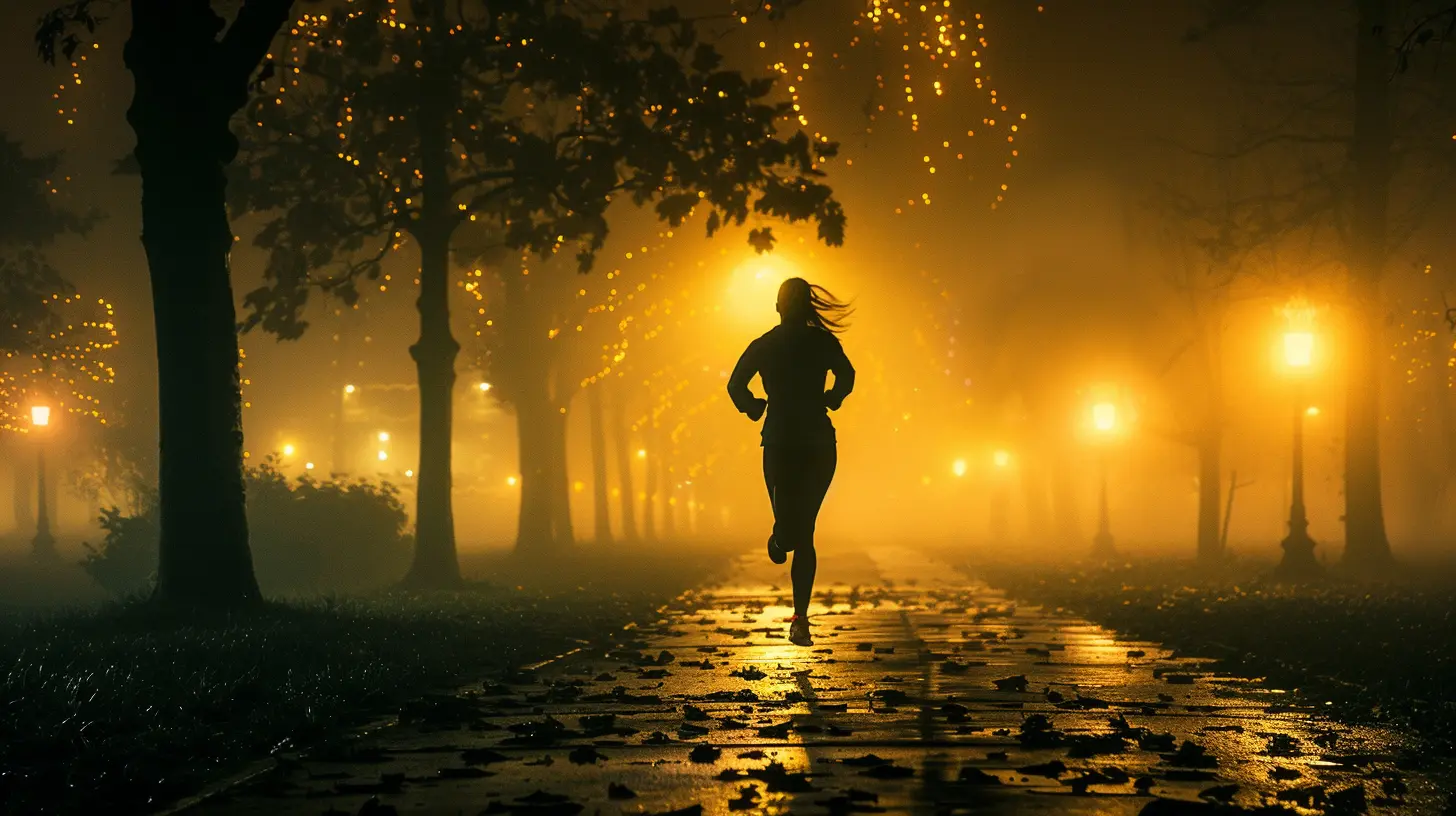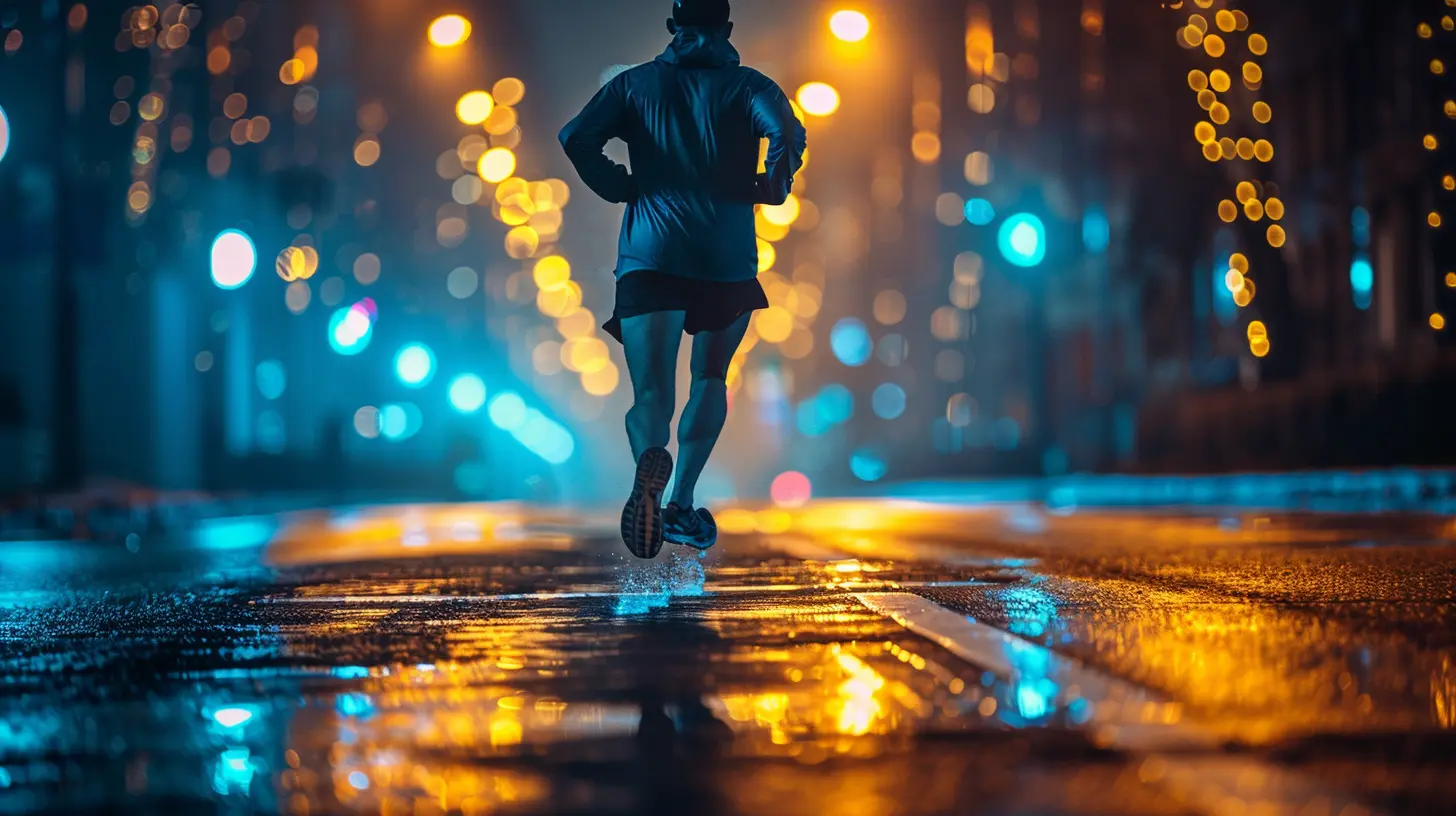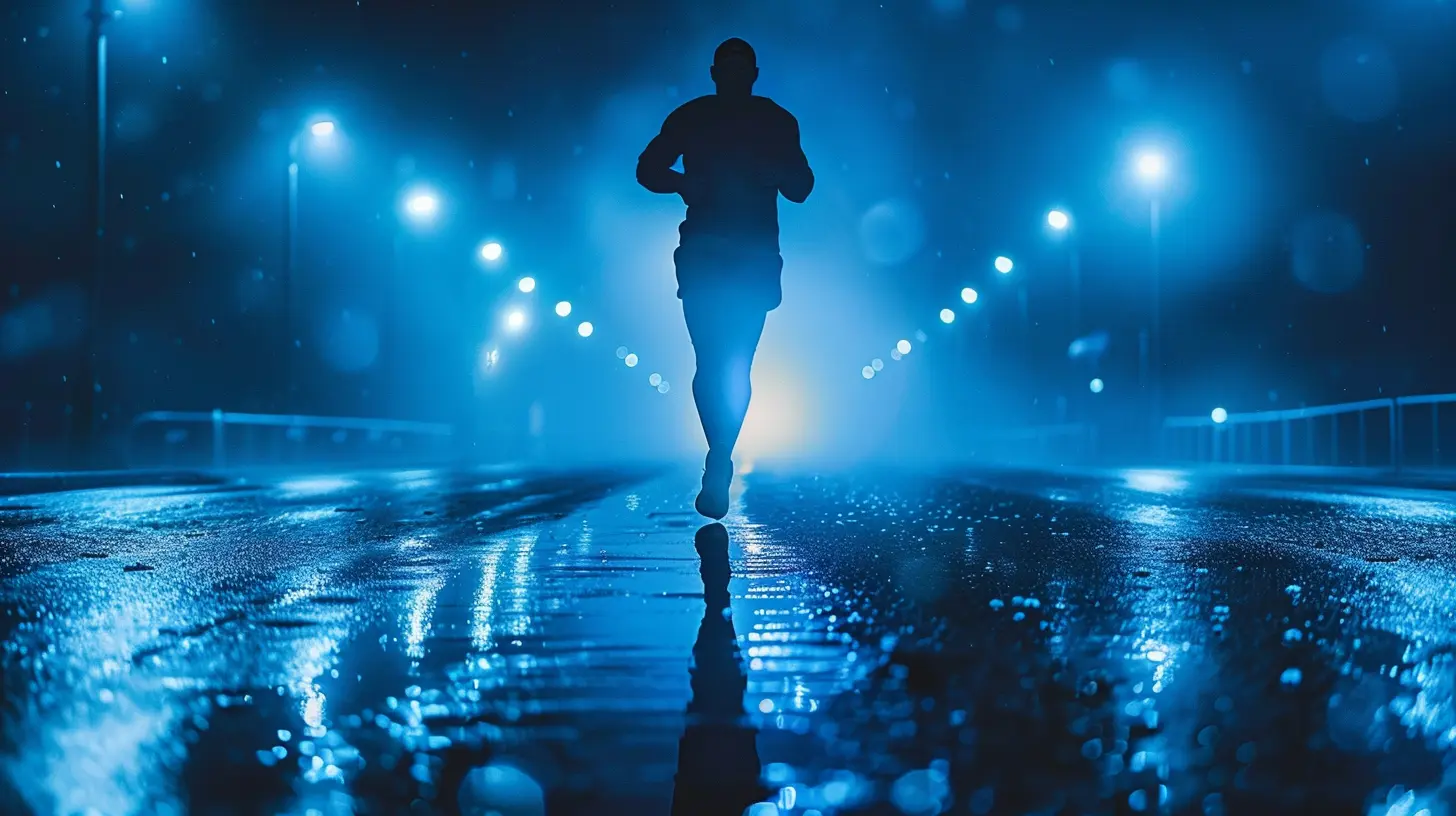How to Run Safely at Night: Tips for Visibility and Safety
9 October 2025
Running at night can feel like a magical escape. The quiet streets, cool air, and dazzling city lights can make your evening run feel less like exercise and more like an adventure. But let’s be honest—it’s also the time when things can go wrong if you’re not careful. Low visibility, distracted drivers, hidden hazards… yeah, night running comes with its own set of challenges.
So if you're a night owl who loves logging miles under the stars or just someone squeezing a run in after a packed day, this guide is for you. We're diving deep into how to run safely at night, with tons of practical tips to keep you visible and out of harm's way.
Why Run at Night Anyway?
Maybe you’re not a morning person. Or maybe your schedule just leaves no room for a daytime jog. Running at night can be a peaceful, reflective, and even therapeutic activity. It’s cooler, quieter, and often less crowded on the roads and trails.But here's the catch: darkness makes everything more dangerous. That's why visibility and personal safety should be your top priorities when you hit the pavement after sunset.
1. Dress to Be Seen: Visibility Is Non-Negotiable
Let’s start with the basics—what you wear can literally save your life.Reflective Gear is a Must
Ever seen someone jogging in all black at night? Don’t be that person. Stick out like a sore thumb—in a good way. Go for clothes that have reflective panels or detailing. Think of it like making yourself glow-in-the-dark.Top tips:
- Wear a reflective running vest or harness.
- Choose clothes in neon colors like lime green, bright orange, or anything that screams “look at me.”
- Add reflective tape to your shoes, hat, or even your gloves.
Don’t Forget Lights
Wearing lights might feel awkward at first, but they make a massive difference. When drivers see blinking or moving lights, they tend to slow down and pay more attention.Consider using:
- A headlamp (this helps you see where you’re going, too)
- Clip-on LED lights for your shoes or waistband
- Arm or wrist lights for side visibility
2. Pick the Right Route
Not every path is safe at night. Some areas that feel great during the day can get sketchy after dark.Stick to Well-Lit Paths
Choose running routes that are:- Well-lit
- Populated (but not crowded)
- Familiar to you
Running in familiar neighborhoods helps you avoid uneven sidewalks, potholes, or any surprise obstacles.
Avoid Heavily Wooded Trails
Even if you love trail running, nighttime is not the best time for it. Trails often have little to no lighting, wildlife, and uneven footing. Best to save those for daytime.
3. Run Facing Traffic (Always)
Here’s a simple tip that could save your life: always run against traffic. Why? Because it lets you see oncoming vehicles. If something’s heading your way, you’ll have the split-second awareness to dodge or alert the driver.When you run with traffic, you’re basically a sitting duck. You can’t see cars, and they might not see you until it’s too late.
4. Ease Up on the Headphones
Look, we all love our running playlists. The right beat can carry you through the toughest miles. But when you’re running at night, your ears become just as important as your eyes.Try One Earbud or Bone Conduction Headphones
Keep one ear open so you can hear:- Cars coming from behind
- Cyclists shouting "on your left"
- Other runners or anyone approaching
Bone conduction headphones are a great alternative. They rest on your cheekbones and leave your ears open—music without sacrificing awareness.
5. Let Someone Know Your Plan
No, it’s not overkill. Telling someone you’re going out for a run at night is just plain smart.Text a friend or family member:
- What route you're taking
- When you’re leaving
- When you expect to be back
If something goes wrong and they haven’t heard from you, they can check in or take action. Some fitness apps even have “live tracking” features that let someone follow your route in real-time.
6. Carry ID and a Phone (Always!)
You never plan for emergencies—but that’s the thing, they're unplanned.Be Ready for Anything
Carry:- A small ID card or wristband with your name and emergency contact info
- Your phone in case you need to call for help (or order a ride home)
- Some cash or a card just in case
There are lightweight belts and phone holders made for runners—no excuses.
7. Consider Running With a Buddy or Group
Running alone can be awesome...but it’s always safer with a friend, especially at night. If that’s not an option, see if there are local running groups that meet in the evenings. Safety in numbers isn’t just a cliché—it’s legit.If you absolutely must run solo, avoid secluded areas and pay extra attention to your surroundings.
8. Stay Alert and Trust Your Instincts
This may sound like advice your mom would give—but guess what? She’s right.Stay Aware of Your Surroundings
- Look around frequently.- Make eye contact with drivers at intersections.
- Watch for cyclists or pedestrians.
And most importantly—trust your gut. If a street feels off, skip it. If something seems fishy, cross the road.
9. Adjust Your Pace and Terrain Expectations
Nighttime isn’t the time for sprint intervals or setting personal bests.Slow Down Just a Bit
It’s okay to run slower when visibility is low. Your body’s working harder to stay alert and avoid obstacles anyway, so ease up and focus on safety.Avoid rough trails, steep hills, or uneven sidewalks—things that might trip you up more easily in the dark.
10. Use Tech to Your Advantage
There are some pretty cool gadgets and apps that can help you feel safer during night runs.Safety Apps and Gadgets:
- Road ID App with live tracking- Personal safety alarms that are small and loud
- Smartwatches with GPS and emergency call features
Use what’s available—not only does it help you stay safe, but your loved ones will also feel better knowing you're prepared.
11. Watch the Weather
The temperature can drop quickly at night. Combine that with moisture or fog and you’ve got yourself a slippery situation.Check the forecast:
- Wear layers if it’s cold
- Be careful of rain or icy patches
- Know when it’s just better to run indoors
You don’t get extra points for braving brutal weather. Be smart.
12. Protect Yourself in Case of Trouble
This part isn’t fun to think about, but it’s essential.Carry a Personal Alarm or Pepper Spray
They’re small, lightweight, and could give you peace of mind. You hopefully won't need to use them—but having that backup plan is empowering.Also, know how to use them. Practice before you hit the road.
Quick Checklist Before Your Night Run
Let’s wrap this up with a quick list. Before you step out for your night run, make sure you’ve got:✅ Bright, reflective clothing
✅ Lights (headlamp, clip-ons)
✅ ID and phone
✅ One ear open (or bone-conduction headphones)
✅ Someone who knows your route
✅ Familiar, well-lit path
✅ A solid dose of street smarts
Final Thoughts: Run Smart and Enjoy the Night
Night running doesn’t have to be risky—it just takes a little extra planning and a lot of common sense. When you take precautions, it can be one of the most calming and exhilarating parts of your day.So lace up, light up, and hit those night roads with confidence. The stars are out, the streets are quiet, and the pavement is calling your name.
Stay safe, stay seen—and keep on running.
all images in this post were generated using AI tools
Category:
RunningAuthor:

Frankie Bailey
Discussion
rate this article
1 comments
Linnea McGehee
Running at night poses unique safety challenges. To enhance visibility, wear reflective gear and use a headlamp. Stick to well-lit routes, avoid headphones, and stay alert to your surroundings. Inform someone of your route and estimated return time for an added layer of safety.
October 19, 2025 at 12:35 PM

Frankie Bailey
Great tips! Prioritizing visibility and staying aware are key for safe night running. Thanks for sharing!


